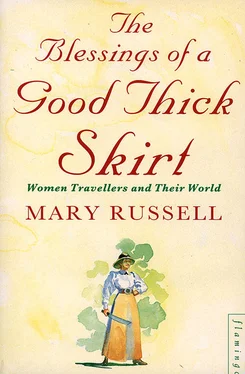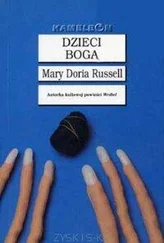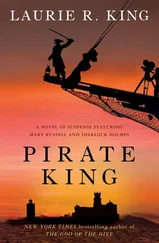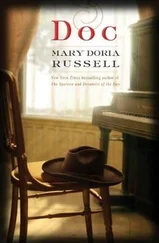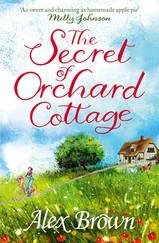Anne Harrison was nineteen when she married Sir Richard Fanshawe, in 1644. Brought up to sew and play the virginal, Anne soon found herself thrust into the role of political refugee, both in her own country and abroad, for Sir Richard, who sided with the King in the Civil War, was frequently on the run from the Roundheads. In the course of her happy marriage, she gave birth to six sons and eight daughters and spent much of her time moving her surviving children from country to country, from safe house to safe house, the burden of planning and negotiating the journeys falling on her shoulders alone. When her husband was finally captured in 1651, she had to make a perilous journey through the London streets to see him.
‘During this time of his imprisonment, I failed not constantly to go, when the clock struck four in the morning, with a dark lantern in my hand, all alone and on foot from my lodging in Chancery Lane, and then I would go under his window and softly call him … sometimes I was so wet with rain that it went in at my neck and out at my heels.’
Like other women travellers who came after her, she became adept at talking her way out of difficult situations – not only her own survival but that of both her husband and her family depended on it When, on Cromwell’s death, Sir Richard left for France, she had to forge a document and disguise herself in order to get past the watchful eye of the Roundhead official. It was a testing time and one to which women responded with courage and vigour. The Restoration period which followed seemed for women so dull, superficial and frustrating in comparison that one of its most famous writers – Margaret Lucas – made a special plea that all women should be ‘free, happy and famous as men’. It was a brave, vociferous demand, made at a time when, in fact, changes both economic and social were slowly beginning to take place which would allow women a far greater freedom to move out of the domestic milieu to which Margaret Lucas felt herself to be so unwillingly chained. During the latter part of the seventeenth century trade and commerce were expanding, the navy was growing and women found themselves running import and export businesses, dealing in insurance and acting as shipping agents. It was against this increasingly prosperous setting that Celia Fiennes was born in 1662, of a well-to-do family of Dissenters.
At the age of twenty, she set out on a series of journeys round England and Scotland which would take her ten years to complete. She was a prim and serious young woman who undertook her journeys, usually riding sidesaddle, with the aim of improving both her health and her intellect: ‘so that my mind,’ she wrote severely, ‘should not appear totally unoccupied’. More disconcerting in one so young – she hoped that the account she planned to bring back would give people more serious things to think about than cards or dice. If people were to concern themselves with ‘observing the pleasant prospects and the different produces and manufactures of each place … they would undoubtedly be cured of the endemic sicknesses of laziness and the vapours’. More to the point, she felt, knowledge of their own country might ‘cure (in others) the evil itch of over-valuing foreign parts’.
The English countryside into which she forayed was not altogether hospitable and it took a considerable sense of adventure, allied to a strong puritan desire for self-improvement, to set out on such a venture. Roads were rough and badly signposted. On horseback, she had to negotiate water-filled potholes so big that a man could drown in one. Since the ending of the Civil War soldiers had turned to vagrancy, and it was a sign of their prosperity that footpads had recently taken to horseback in order to make their getaway more efficient. Travellers were especially vulnerable on open heaths and in forests, Epping, Hampstead and Hounslow being the well-known danger spots. A sixteen-year-old heiress was attacked no less than eleven times and women took to travelling with a spare purse of money ready to hand over to robbers. Clearly, even a short journey to market was not to be undertaken lightly.
Without children to leaven her solemn attitudes, Celia Fiennes’ view of life tended to be staid and devoid of humour, but her insatiable curiosity and sturdy determination more than compensated for this. Her description of a meeting with highwaymen is typical of her style not only of writing but of living: ‘… two fellows all of a sudden from the wood fell into the road and they looked all trussed up with great coats and as it were, bundles about them which I believe were pistols.’ They jostled her horse and tried to get between it and those of her servants and when asked the way said they didn’t know the area though later it became obvious that they did. The Fiennes party was saved by the presence of men haymaking nearby. ‘It was the only time I had reason to suspect I was engaged with some highwaymen,’ she remarked, characteristically omitting to say whether or not she had been frightened.
While Celia was exploring her native England, a contemporary of hers had been making a name for herself first as a spy and later as a writer. Aphra Behn was born in 1640 and brought up in Kent. Details of her childhood are uncertain but in her early twenties she sailed with some of her family to live as part of the household of the Governor of Surinam. Life in the tropics seemed strange to the young girl, but she had a generous, open mind, receptive to the wonder of it all and when, with her brother, she encountered some slaves recently uprooted from their African homes she was ready to approach them with friendliness and compassion. In a long, full dress and with a bonnet covering her unconventionally short hair, her appearance must have seemed as strange to them as theirs did to her. ‘They touched us, laying their hands on all the features of our faces, feeling our breasts and arms, taking up one petticoat then wondering to see another; admiring our shoes and stockings but more our garters which we gave them and they tied about their legs, being laced with silver lace at the ends.’ The arrival, however, of the chieftains of war was another thing altogether, for they seemed a ferocious bunch with their marks and self-mutilations: ‘… so frightful a vision it was to see them … some wanted their noses, some their lips … others cut through each cheek’. They wore ‘girdles of cotton with their knives naked stuck in it … a quiver of arrows on their thighs and feathers on their heads’. Nevertheless, she found them both humane and noble.
Returning to England in 1663, Aphra married a merchant called Behn who died within three years, and she was then sent to Antwerp as a spy, with little more to live on than forty pounds and money from the sale of her rings. It seems that she never married again, for she regarded that institution as ‘the cheap drug of a church ceremony’. She received little thanks for the political and naval information she sent back from Antwerp, and on her return she devoted herself to earning a living from her writing, becoming the first Englishwoman to do so and drawing copiously on her travels in Surinam which she recounted as the background to her autobiographical novel Oroonoko, published a year before her early death at the age of forty-eight.
It is one of life’s small ironies that women – their own position in society not unlike that of a colonized country – were themselves able to take a ride on the great wave of colonization that burst outwards into the unclaimed world. The more ambitious and adventurous among them were quick to grasp the opportunity to travel far beyond the tamer shores of Europe to the unknown excitements of distant colonies. While Aphra Behn was working in Holland to undermine any plans the Dutch might have to defeat the English navy, another woman – also in Holland – was starting to build up a career that would eventually take her, also, to Surinam.
Читать дальше
